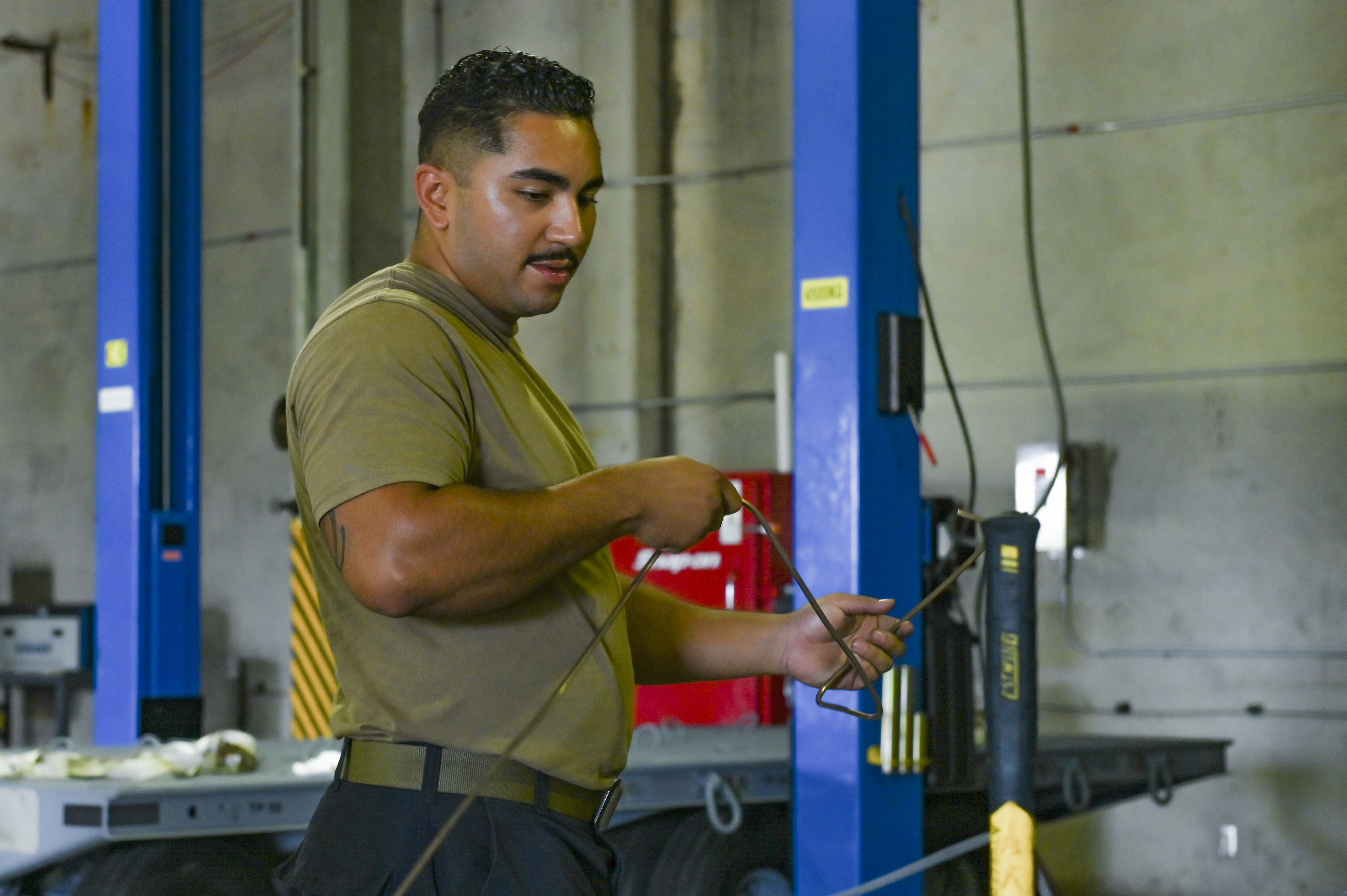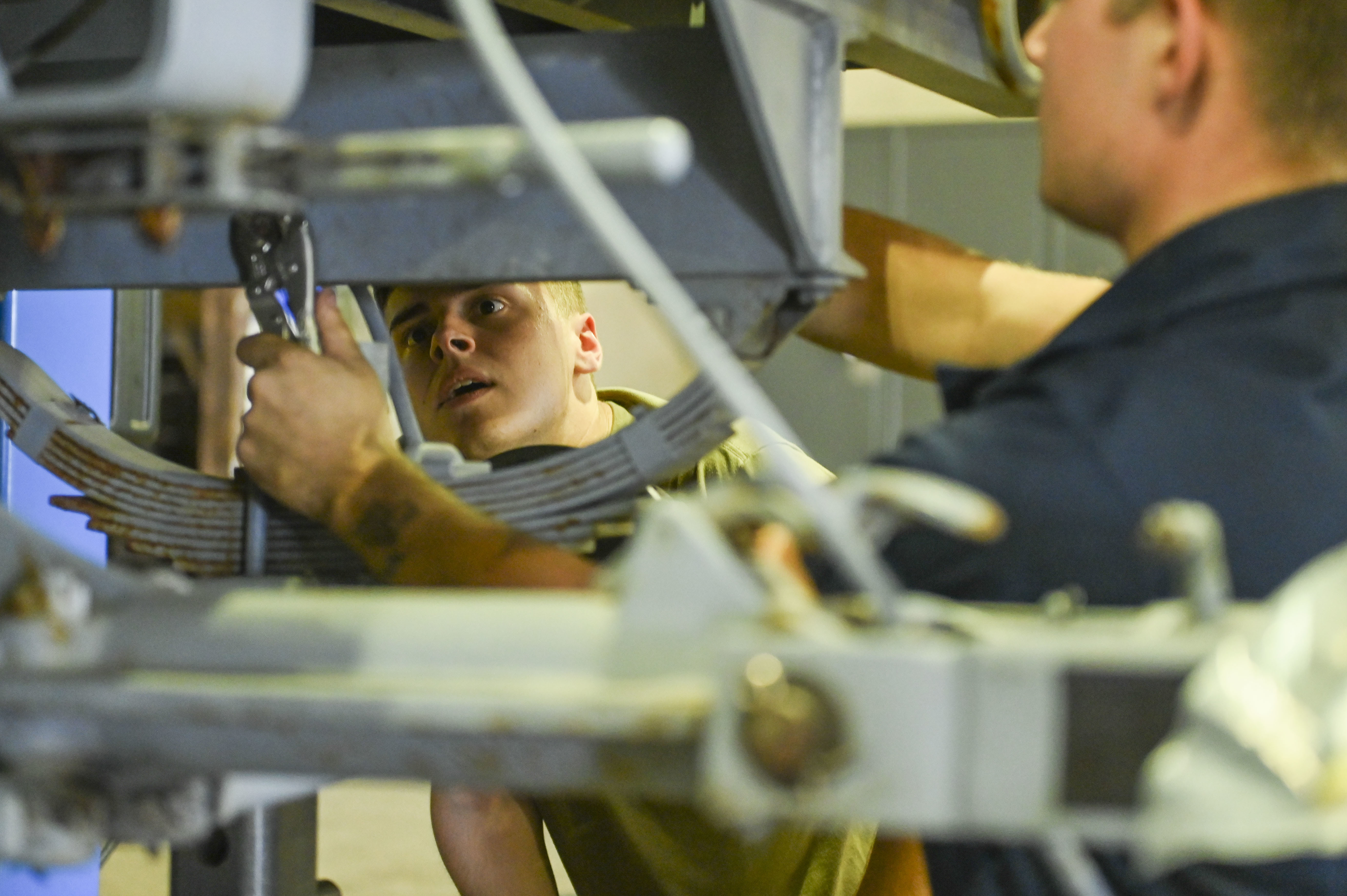In most cases, five years is the approximate service life of a munitions trailer at the Andersen Air Force Base in Guam. These trailers are essential for transporting munitions and related equipment to and from the flight line in support of training, exercises, or real-world activities by the U.S. Air Force base’s airmen.
But due to the intensity of the island’s natural elements, any equipment containing metal tends to corrode at a faster rate. In turn, this substantially limits the expected service life compared to the equipment’s intended lifespan.
New Copper-Nickel Alloy Lines
To address that challenge, the munitions support equipment maintenance team assigned to the 36th Munitions Squadron (36 MUNS) is working on a new way to limit the corrosion rate while doubling the service life of its trailers. The team’s plan involves switching from stainless steel (SS) brake lines to copper-nickel (Cu-Ni) alloy lines.
“As a member of the noncommissioned officer corps at my work center, we had been brainstorming ideas on how to limit brake system failure due to the corrosion,” says U.S. Air Force Staff Sgt. Derek Merkley, support section lead of munitions support equipment maintenance assigned to the 36 MUNS.

Limitations of Stainless Steel
Although SS is highly resistant to corrosion and rust, the environment often proves to be a challenge, according to the Air Force. The corrosion causes leaks and brake line ruptures, which result in complete failure of the hydraulic brake system. This renders the trailer unserviceable.
By comparison, Air Force representatives say the Cu-Ni alloy is significantly more resistant to the effects of corrosion, especially in marine salt-water environments.
“Copper does not tarnish or corrode nearly as fast as stainless steel, and in theory it will last considerably longer,” says U.S. Air Force Staff Sgt. Ryan Brown, a production supervisor of munitions support equipment maintenance assigned to the 36 MUNS.
“However, because copper by itself is a weak metal, it gets infused with nickel to strengthen the metal while still providing the corrosion resistance that we need,” Brown adds.

Testing Against the Elements
Initially, the team plans to replace the brake lines on only six of its trailers. Before widespread adoption, the idea is to put the new lines to the test against Guam’s elements.
“If the trial run of six trailers proves successful, it opens another avenue that all MUNS could use to keep our munitions material handling equipment fleets serviceable,” Merkley says.
According to the Air Force, the process of obtaining the new material has proven to be more efficient and cost effective for the maintenance team. The only drawback is that the team must cut, bend, and flare the Cu-Ni alloy lines, which adds another hour of labor per trailer.
It will take roughly five years of normal wear and tear to know if the Cu-Ni lines will truly withstand the elements of Guam better than the SS lines, the maintenance team estimates.
“Even if we don’t see an increase in service life, the time and money we save in materials is worth the investment,” Markley concludes.
Source: U.S. Defense Visual Information Distribution Service, www.dvidshub.net.